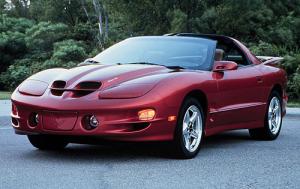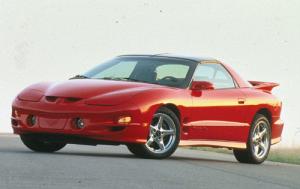Every once in a great while a car achieves a superstar-like status. It's etched into our minds forever and its name and image is instantly recognizable. The Pontiac Firebird is such a car.

With its sleek coupe body style, outstanding driving performance, and affordable pricing at the time, the Firebird was a massive success for decades.
But by 2002, changing consumer tastes caused many to feel that the Firebird lacked "refinement" and creature comforts ... and Pontiac pulled the plug.
That hasn't changed the fact that thousands of car enthusiasts worldwide still appreciate the performance, styling and tradition of this iconic vehicle.
If you're looking for a "nice" Trans Am, however, you probably already know you have your work cut out for you. They are simply getting harder and harder to find.
With production stopped in 2002, the supply of the good specimens just keeps on shrinking with every passing year. Yet with its reputation as a true muscle car with almost breath-taking performance, the demand for the Firebird Trans Am persists among performance enthusiasts.
And who can blame them? The LS1 Firebirds were among the fastest ever produced, with an all-aluminum 5.7L V8, derived from the Corvette, producing 305 hp (310 after 2000), or 320 hp (325 after 2000) in the WS-6 "Ram Air" version.
These Fourth Generation Firebirds are simply a blast to drive (although noisy). Many even believe these engines were purposely underrated by GM and actually produce up to an additional 40 horsepower.
Average quarter-mile times were reported at 13.4 seconds. With the WS-6 performance package, it's pretty much on a level playing field with a Porsche 911, which were priced at about $75,000.
And while the Ford Mustang was kicking their behinds in the showroom, on the track a Mustang was left wondering what hit them.

The last generation of Firebirds were produced for the 1993 - 2002 model years. At first, model choices were coupe only in base, Formula and Trans Am trims.
Powering the base was a 3.4-liter V6 that produced 160 horsepower, while under the hood of the Trans Am was an LT1 5.7-liter V8 good for 275 horsepower. The choice of transmissions included a 4-speed automatic, a 5-speed manual (V6) and a 6-speed manual (V8).
In 1994, the Firebird convertible was reintroduced and the base Firebird's engine was upgraded in 1995 to a 200-horsepower 3.8-liter V6.
For the 1996 model, the Trans Am's V8 was boosted to 285 horses, while Ram Air induction also returned for the V8, increasing output to 305 horsepower.
There was a model refresh for 1998 which added a new front fascia and a more powerful LS-1 5.7-liter V8 engine that upped output to 305 horsepower or 320 hp with Ram Air.
Things mostly then carried over largely unchanged through the 2002 model aside from some minor trim revisions and a further boost in power to 310 horses for the V8 in 2001.
Pontiac Trans Am shoppers should be mindful that while this car is fast and good looking, its downside is a fairly basic and unrefined interior. The seats are fairly plain and not completely supportive in all situations, and overall roominess is on the tight side.
There's also a lot of lower-grade plastic trim and inferior feature components. That said, the gauges are large and well-placed and the cargo capacity is surprisingly useful.
Overall, the Firebird Trans Am scores highly for power-performance for the dollar, handling, body styling and cargo room, while its mechanical reliability has also generally been fairly good.
Negatives include a lower quality cabin, a somewhat small interior and T-tops that can be prone to leaking.
Still, the Trans Am is an iconic American muscle car that simply offers a lot of performance-bang for the buck.
1993 - 2002 Pontiac Firebird Trans Am Possible Mechanical Problems
The fourth generation Firebird Trans Am had several fairly common mechanical issues reported by owners and mechanics which should therefore be included in a pre-purchase inspection today:
OptiSpark Distributor: One notorious issue was with the OptiSpark distributor, particularly in earlier models. It's prone to failure due to its location at the front of the engine, exposing it to water and heat, leading to misfires and stalling.
Transmission: Automatic transmissions, especially in earlier years, could experience problems such as shifting issues, slipping gears, or failure. The manual transmissions were generally more robust but could still encounter synchro or linkage problems.
Cooling System: Overheating was a common complaint, often due to issues with the cooling system, including radiator leaks, water pump failures, or thermostat malfunctions.
Window Motors and Regulators: Power window motors and regulators are known to fail over time, causing windows to get stuck in the open or closed position.
Electrical Gremlins: Like many cars from this era, electrical issues could arise, such as malfunctioning dash gauges, power door locks failing, or issues with the HVAC system.
Suspension Components: The suspension components, including bushings and ball joints, could wear out prematurely, leading to clunking noises, poor handling, or uneven tire wear.
Exhaust Manifold Cracks: Cracks in the exhaust manifolds are relatively common, leading to exhaust leaks and reduced engine performance.
 By Josh Rosenberg
By Josh Rosenberg